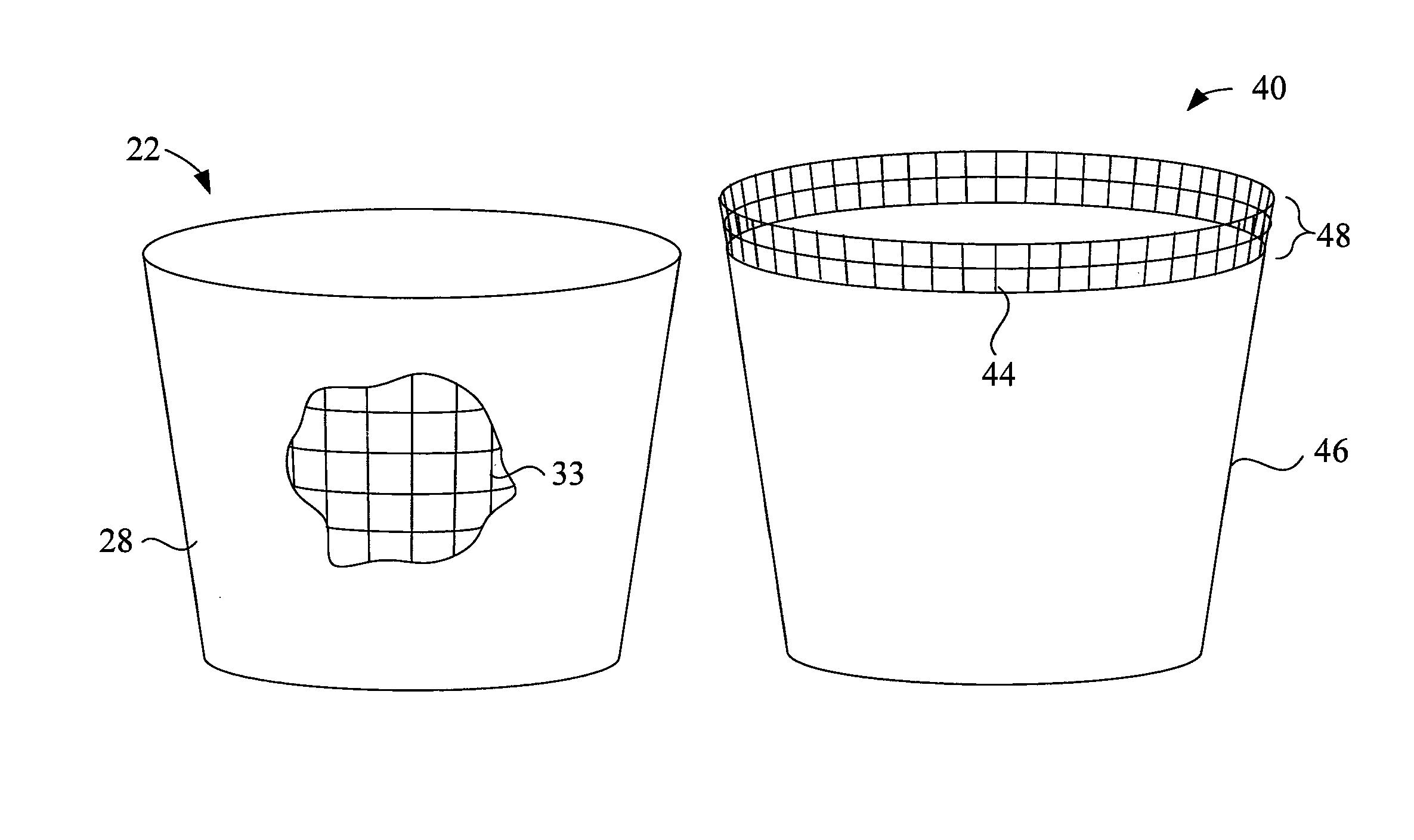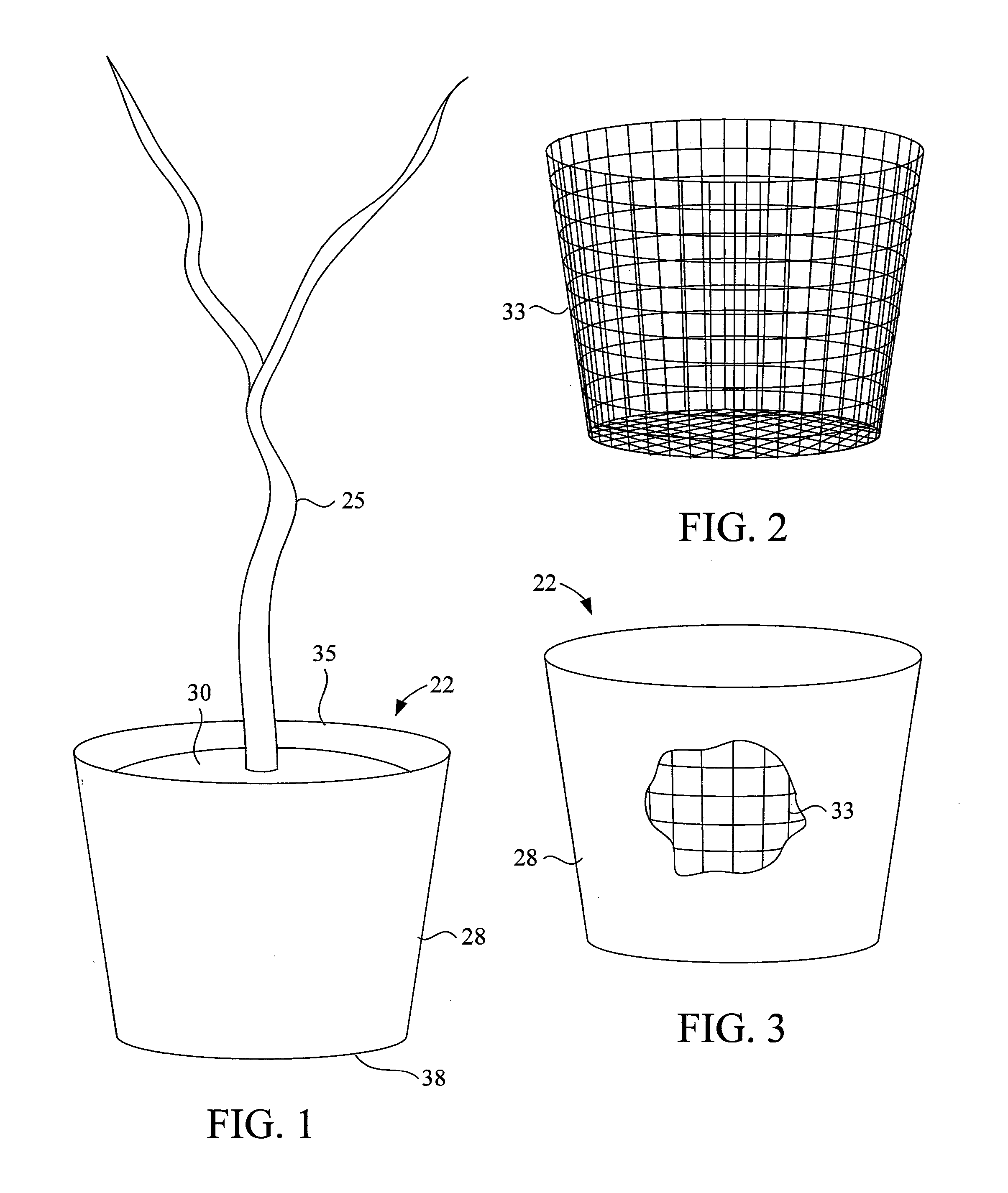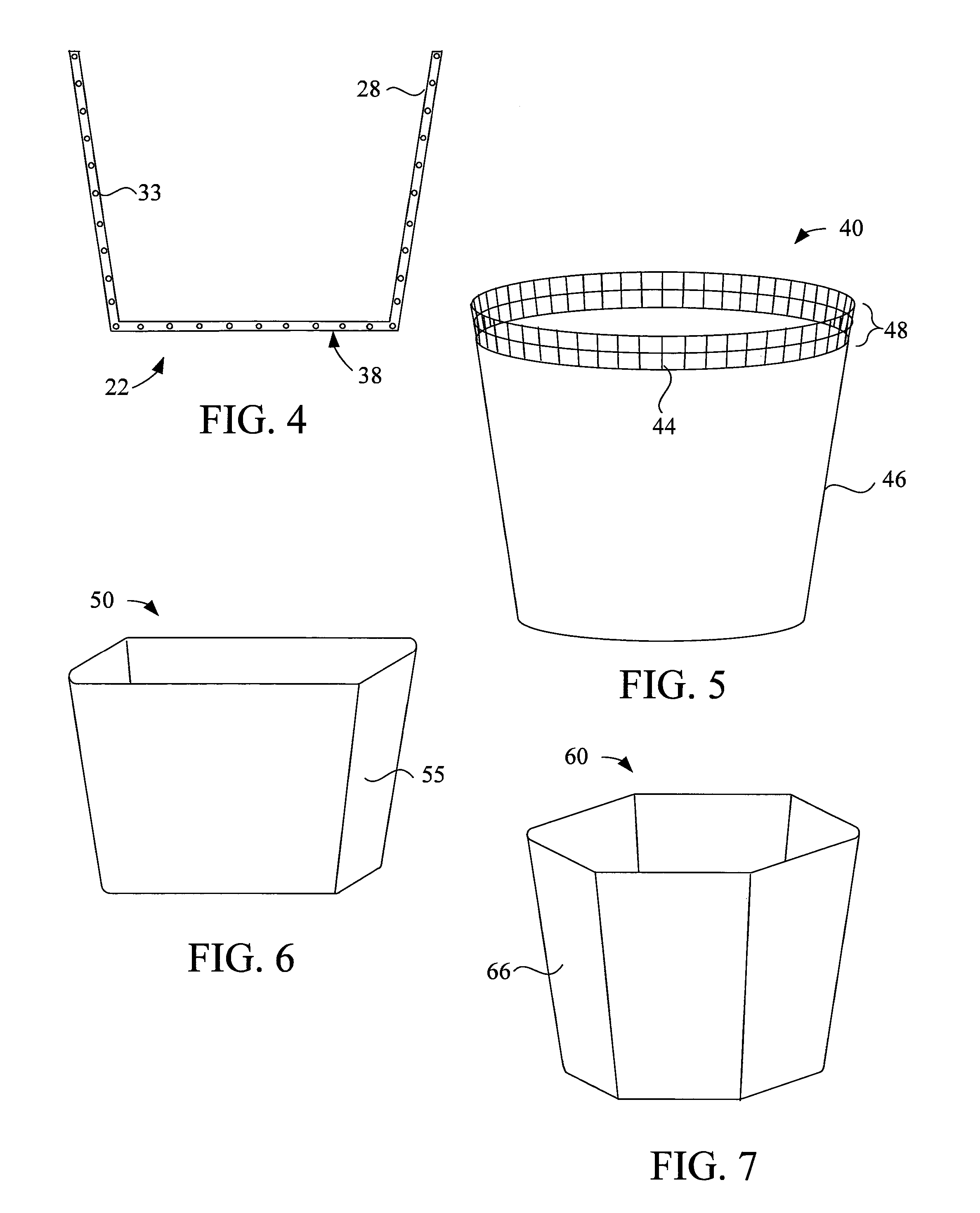Planting pots with wire mesh and biodegradable material
a technology of biodegradable materials and plant pots, which is applied in the field of plant pots with wire mesh and biodegradable materials, can solve the problems of affecting the growth of plants, so as to improve the tensile strength, the effect of quick softening and less prone to breakag
- Summary
- Abstract
- Description
- Claims
- Application Information
AI Technical Summary
Benefits of technology
Problems solved by technology
Method used
Image
Examples
Embodiment Construction
[0021]FIG. 1 shows an embodiment of a plant pot 22 according the present disclosure holding a plant 25. The plant 25 may in the illustrated example be a deciduous tree, such as a fruit or nut tree, but in general such a plant may be any kind of tree, vine, vegetable, flowering plant, etc., which can be housed at least temporarily in a planting container. The plant 25 has roots that are buried in soil 30 that is held in the pot 22. Often, such a plant 25 may be transplanted into the ground, preferably while remaining within its pot 22, but this is not necessary. The pot 22 contains a layer of biodegradable material 28 that holds the soil 30 but is designed to degrade when in the ground to allow the plant's roots to penetrate the pot 22. The pot 22 also contains a wire mesh 33, shown in FIG. 2, which is not visible in FIG. 1 because it is covered by the biodegradable material layer 28. The pot 22 is tapered, so that it is larger near a top opening 35 than a bottom surface 38.
[0022]FIG...
PUM
 Login to View More
Login to View More Abstract
Description
Claims
Application Information
 Login to View More
Login to View More - R&D
- Intellectual Property
- Life Sciences
- Materials
- Tech Scout
- Unparalleled Data Quality
- Higher Quality Content
- 60% Fewer Hallucinations
Browse by: Latest US Patents, China's latest patents, Technical Efficacy Thesaurus, Application Domain, Technology Topic, Popular Technical Reports.
© 2025 PatSnap. All rights reserved.Legal|Privacy policy|Modern Slavery Act Transparency Statement|Sitemap|About US| Contact US: help@patsnap.com



